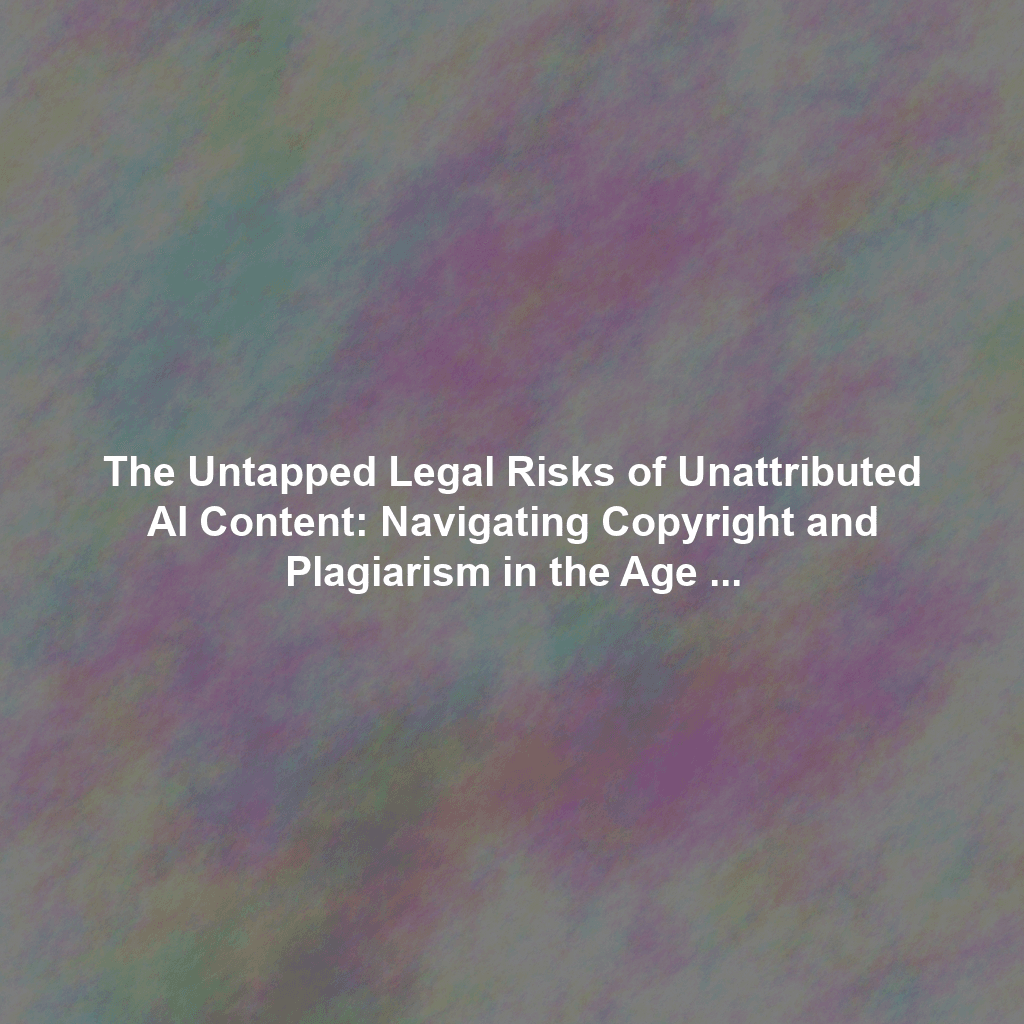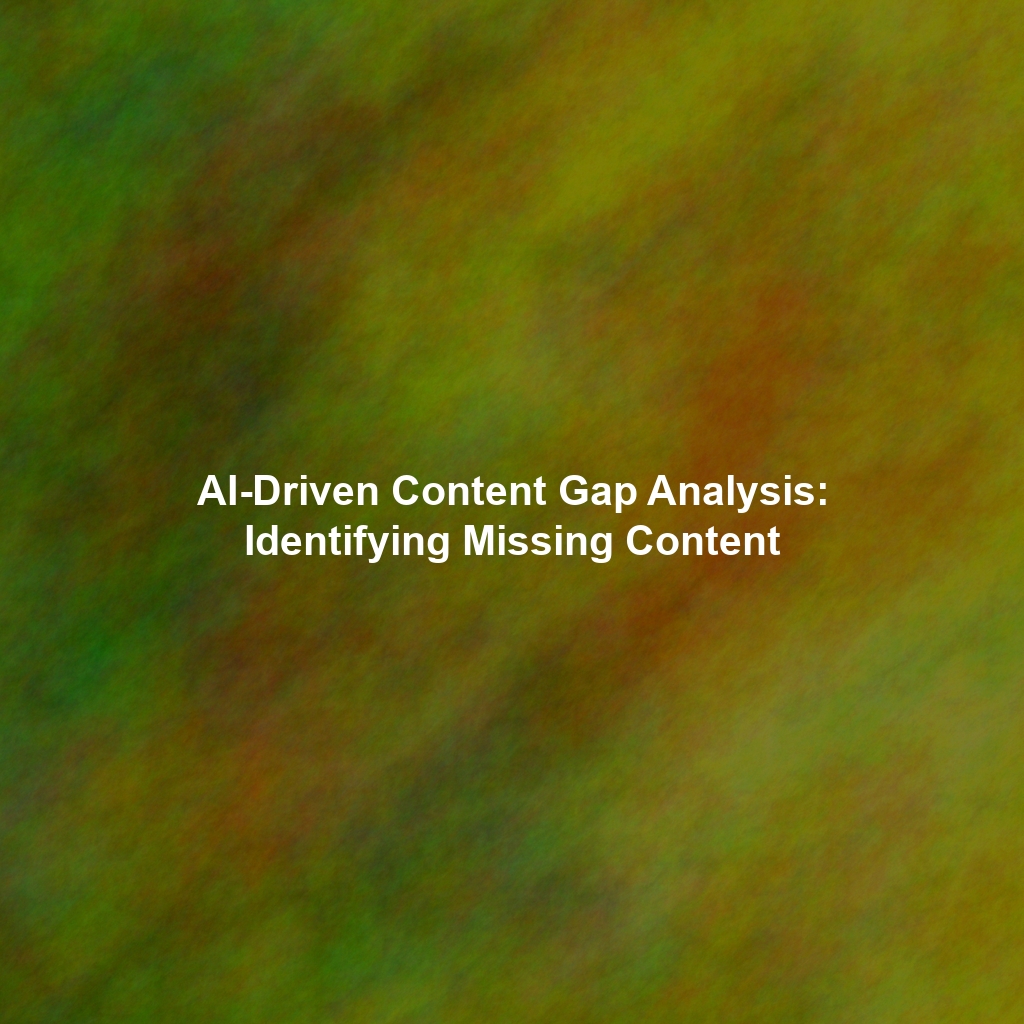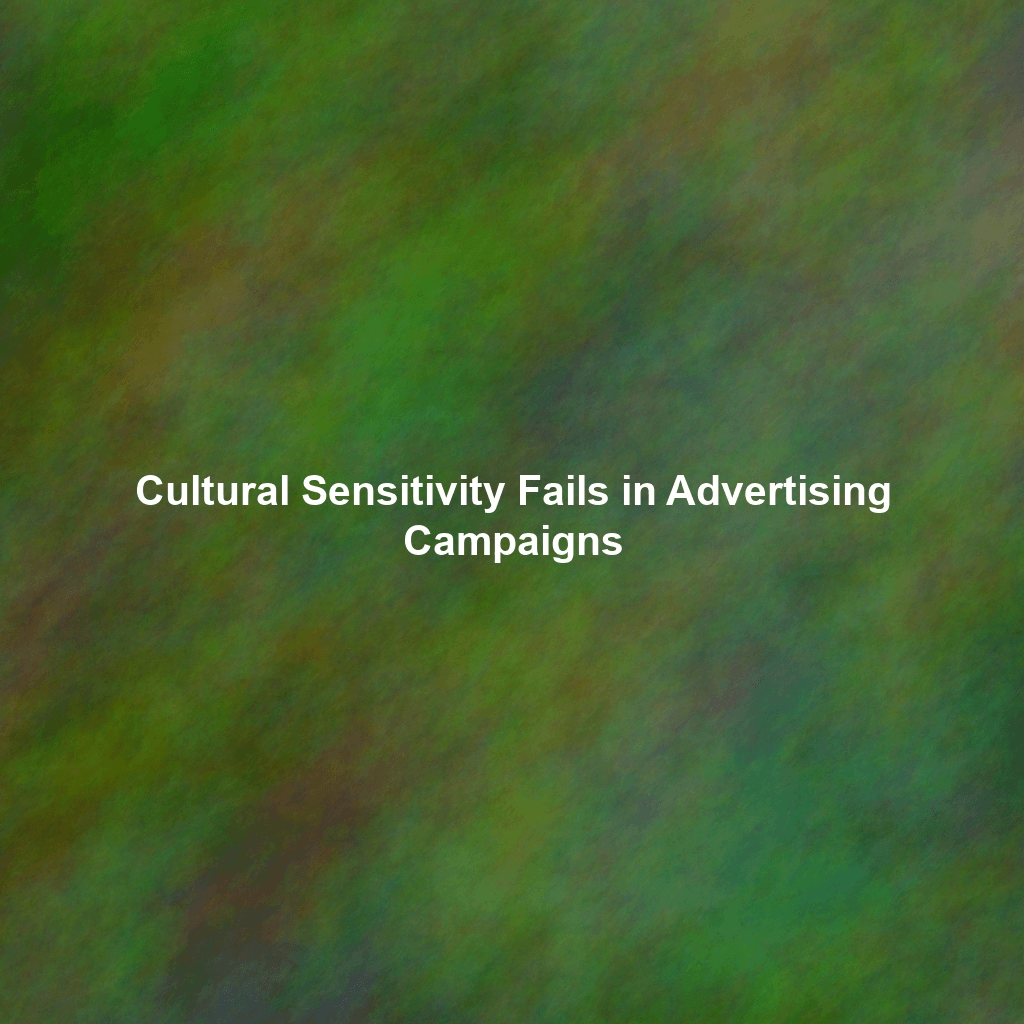Generative AI is rapidly transforming content creation, offering unprecedented opportunities to automate tasks and produce diverse outputs, from marketing copy to complex code. However, this technological leap introduces new legal complexities, particularly concerning copyright infringement, plagiarism, and intellectual property rights. The ease with which AI can generate content often masks the underlying sources and data it draws upon, creating potential legal landmines for unaware users. This article explores the legal ramifications of using AI-generated content without proper attribution and provides practical guidance on mitigating these risks.
Understanding the Legal Landscape of AI-Generated Content
The legal framework surrounding AI-generated content is still evolving, leading to significant uncertainty. Traditional copyright laws were not designed to address works created by algorithms, leading to debates about authorship, ownership, and liability.
Copyright Infringement Risks
AI models are trained on vast datasets, often including copyrighted material. If an AI-generated output closely resembles copyrighted content, even unintentionally, it can lead to copyright infringement claims. The key question is whether the AI model merely learned from the copyrighted work or substantially copied it. Proving substantial similarity can be challenging, but the risk remains significant, especially if the AI model was trained on a dataset known to contain copyrighted material without proper licenses.
Plagiarism and Academic Integrity
While copyright infringement involves legal action, plagiarism is an ethical violation, particularly in academic and professional contexts. Using AI-generated text without proper attribution can be considered plagiarism, regardless of whether the AI model infringed on copyright. This can lead to serious consequences, including failing grades, expulsion from academic institutions, and damage to professional reputation.
The Question of Authorship and Ownership
Who owns the copyright to AI-generated content? Is it the AI developer, the user who prompted the AI, or does the work fall into the public domain? Current legal opinions are divided. In some jurisdictions, copyright protection is only granted to works created by human authors. However, there’s a growing movement to recognize AI-assisted works and establish clear ownership guidelines. Until the legal landscape becomes clearer, it’s crucial to err on the side of caution and implement robust source tracking and attribution practices.
Practical Guidance: Avoiding Legal Pitfalls
Navigating the legal challenges of AI-generated content requires a proactive approach to source tracking and citation. Here are practical steps you can take to mitigate risks:
Meticulous Source Tracking
Whenever you use AI to generate content, make an effort to understand the potential sources the AI might have drawn upon. Document the specific prompts you used, the AI model you employed, and the date and time of generation. This information can be crucial in demonstrating due diligence if a copyright claim arises. Some AI tools are beginning to offer transparency features that reveal potential source material. Utilize these features whenever possible.
Rigorous Citation Practices
Treat AI-generated content as you would any other source. If the AI model provides information or insights that are not common knowledge, cite the AI and the prompts you used. Develop a consistent citation style for AI-generated content, similar to MLA, APA, or Chicago styles. Include details like the AI model name, version, date of access, and the specific prompts used. This demonstrates that you’re not claiming the AI’s output as your own original work.
Review and Edit AI-Generated Content Carefully
Don’t blindly publish AI-generated content. Always review and edit the output thoroughly. Check for factual accuracy, potential biases, and any signs of plagiarism or copyright infringement. Use plagiarism detection tools to scan the text and identify potential matches to existing sources. Paraphrase and reword the content to ensure it reflects your own understanding and writing style. This not only reduces the risk of legal issues but also improves the overall quality of the content.
Obtain Necessary Licenses and Permissions
If the AI-generated content is intended for commercial use, consider obtaining licenses or permissions for any potentially copyrighted material it might incorporate. This can involve contacting the copyright holders of the original sources and negotiating licensing agreements. While this can be a complex process, it’s a crucial step in protecting yourself from legal liability.
Document Your Due Diligence
Maintain detailed records of your source tracking, citation practices, and review processes. This documentation can serve as evidence of your good faith efforts to avoid copyright infringement and plagiarism. In the event of a legal dispute, demonstrating that you took reasonable steps to attribute sources and ensure originality can significantly strengthen your defense.
Real-World Considerations and Case Studies (Hypothetical)
While concrete legal precedents surrounding AI-generated content are still emerging, we can consider hypothetical scenarios to illustrate the potential risks.
Hypothetical Case Study 1: The Marketing Agency and the AI-Generated Ad Copy
A marketing agency uses an AI tool to generate advertising copy for a client. The AI produces a slogan that closely resembles a competitor’s registered trademark. The competitor sues the marketing agency for trademark infringement. Without proper source tracking and documentation, the agency struggles to defend itself, facing potential damages and reputational harm.
Hypothetical Case Study 2: The Student and the AI-Assisted Essay
A student uses an AI model to assist with writing an essay. The student submits the essay without properly citing the AI or reviewing its output. The professor detects plagiarism and accuses the student of academic dishonesty. The student faces disciplinary action, including a failing grade and potential suspension.
Conclusion: Embracing Transparency and Responsibility in AI Content Creation
The rise of generative AI presents both incredible opportunities and significant legal challenges. By embracing transparency, implementing rigorous source tracking and citation practices, and conducting thorough reviews of AI-generated content, users can mitigate the risks of copyright infringement, plagiarism, and potential lawsuits. As the legal landscape continues to evolve, staying informed about the latest developments and seeking legal advice when necessary are crucial steps in navigating the complex world of AI-assisted content creation. Proactive risk management is not just a legal necessity; it’s also an ethical imperative for responsible and sustainable use of AI in content creation.
 Skip to content
Skip to content

